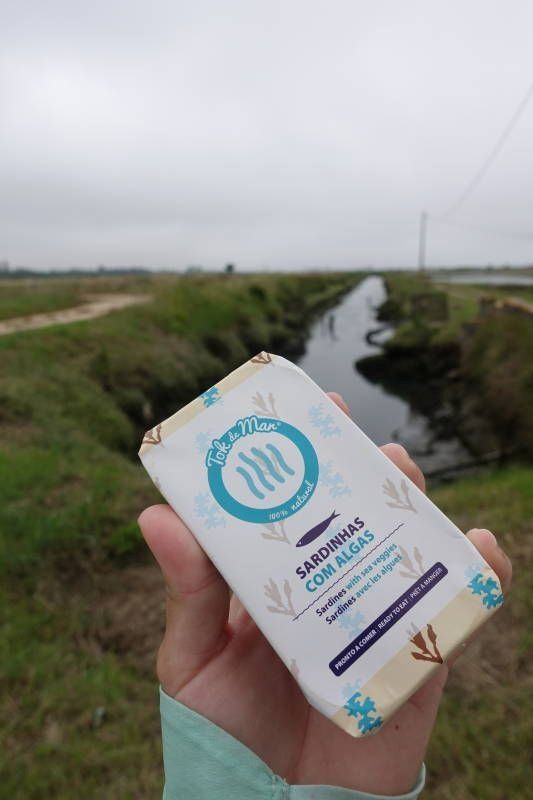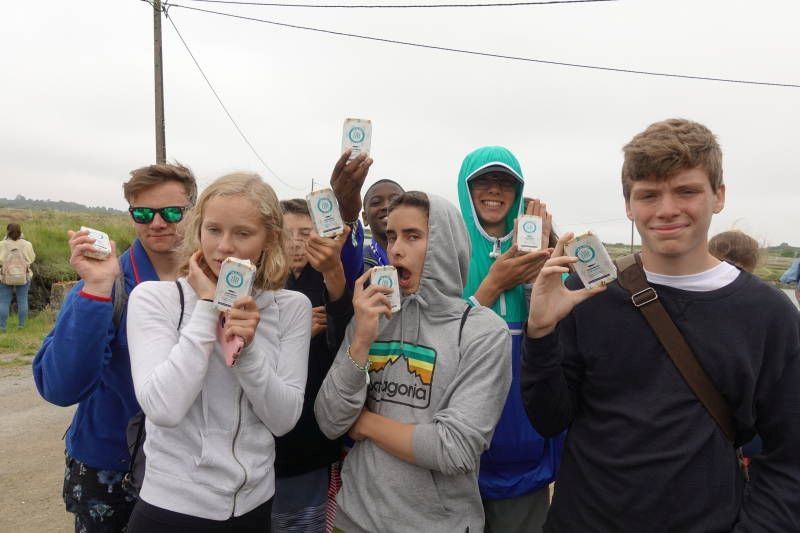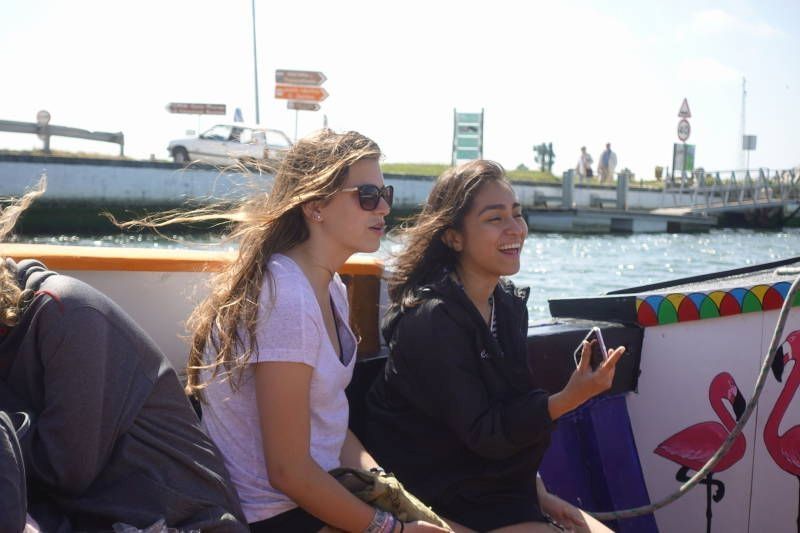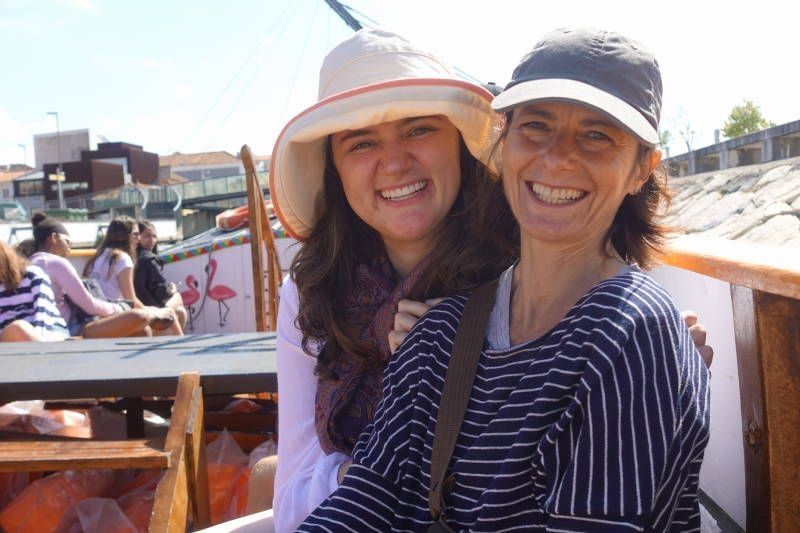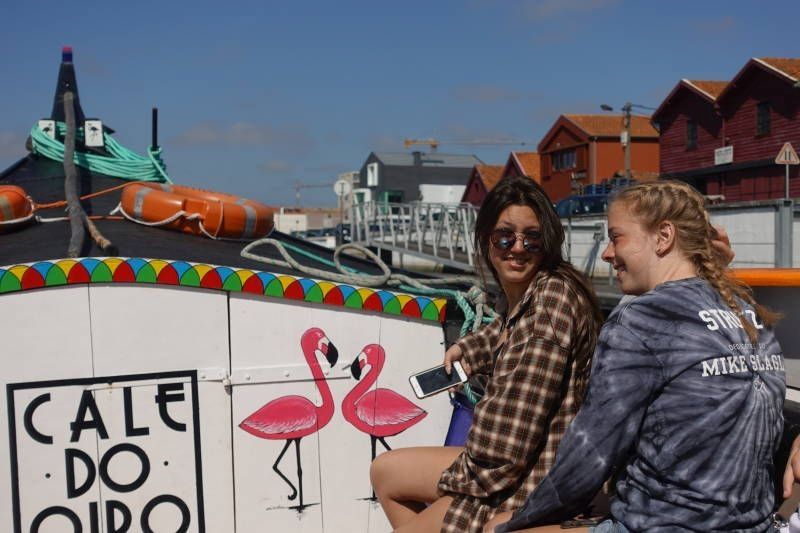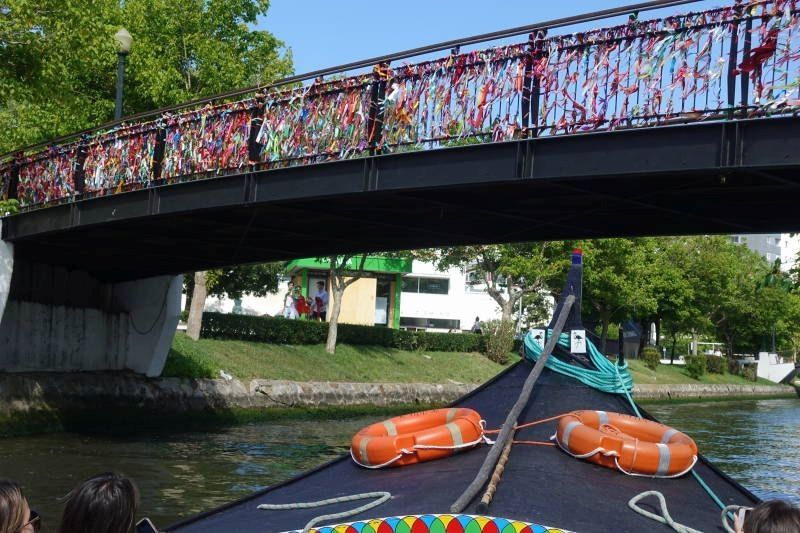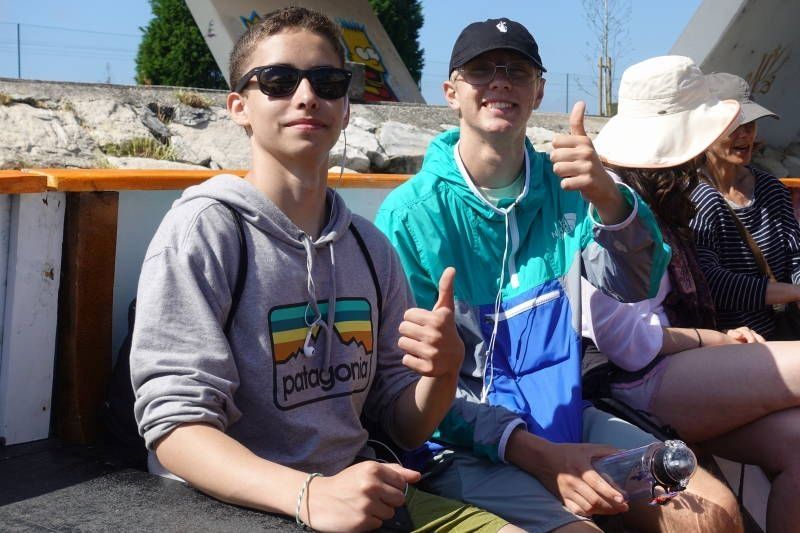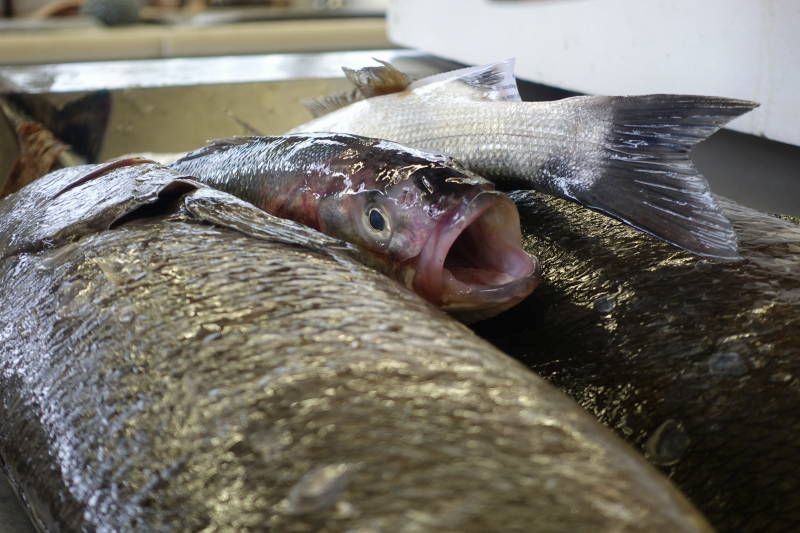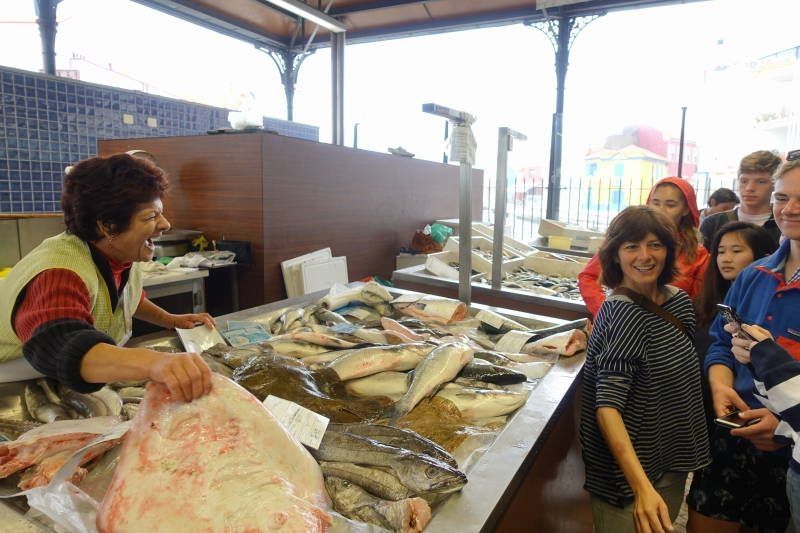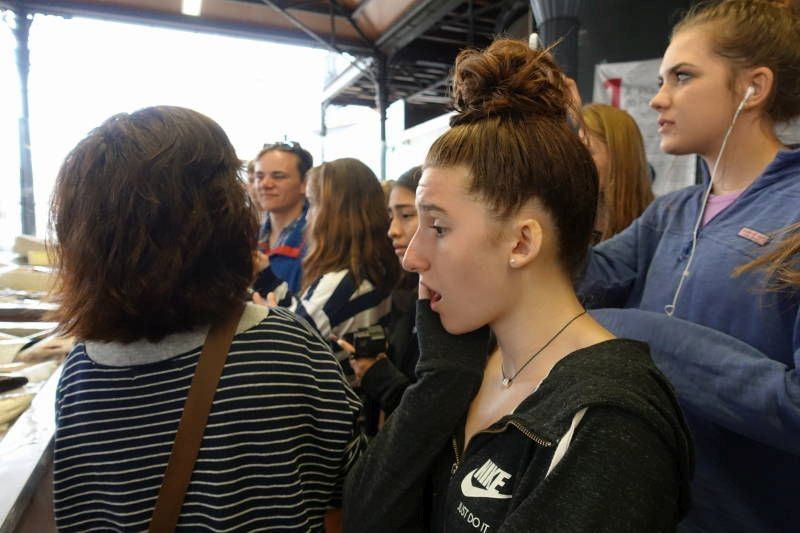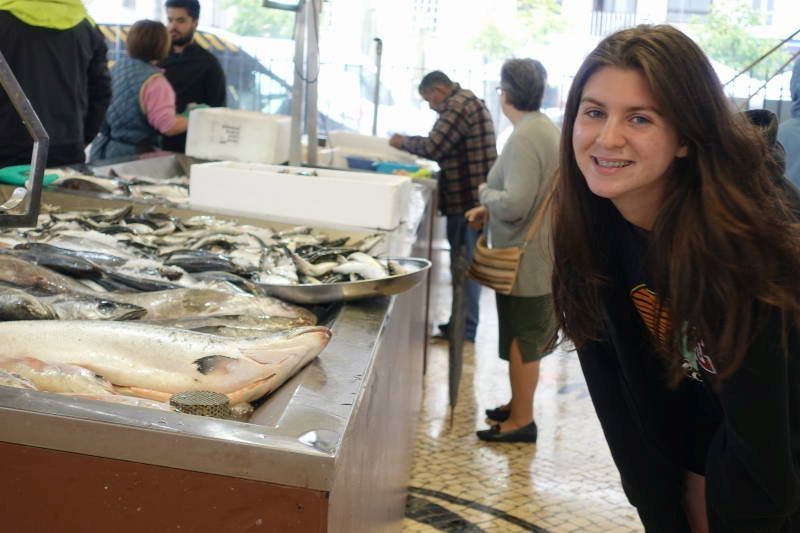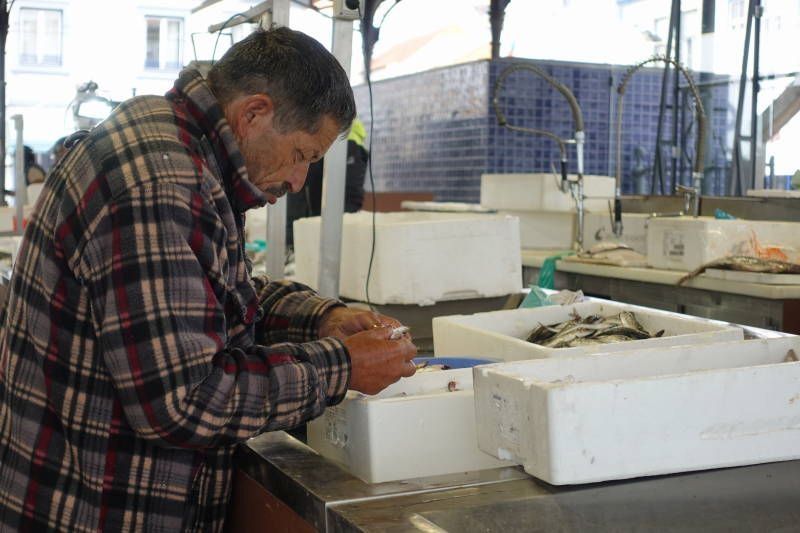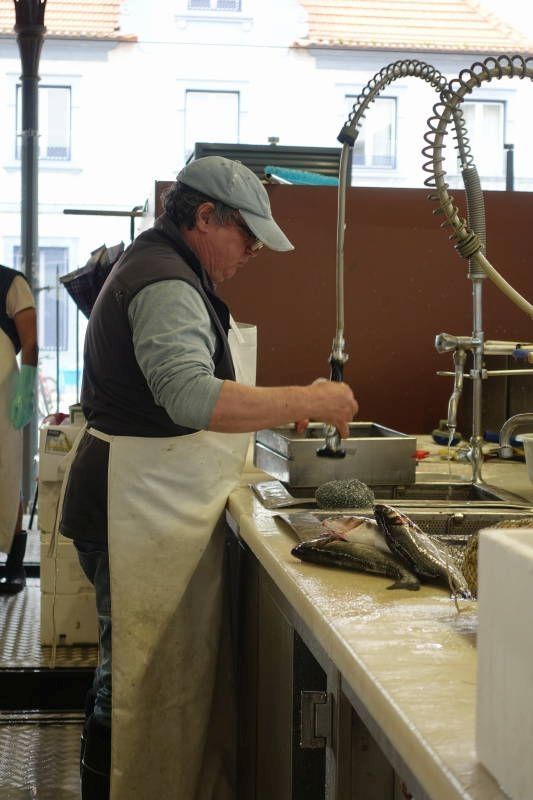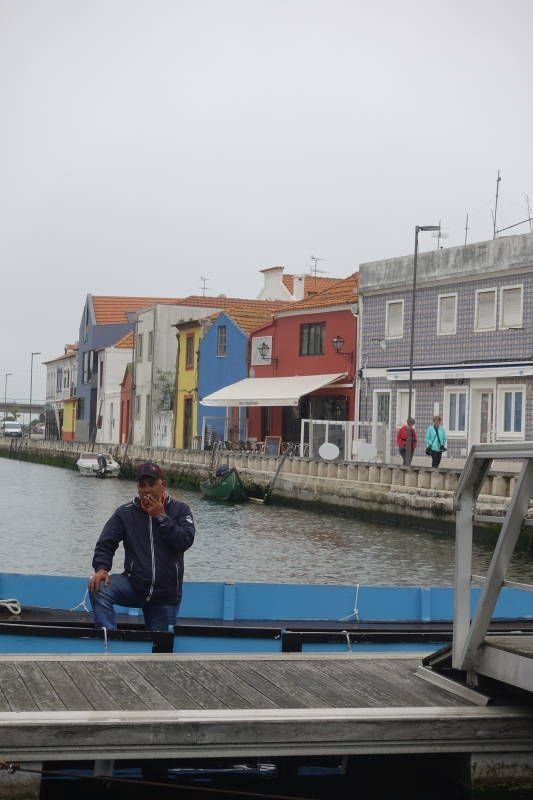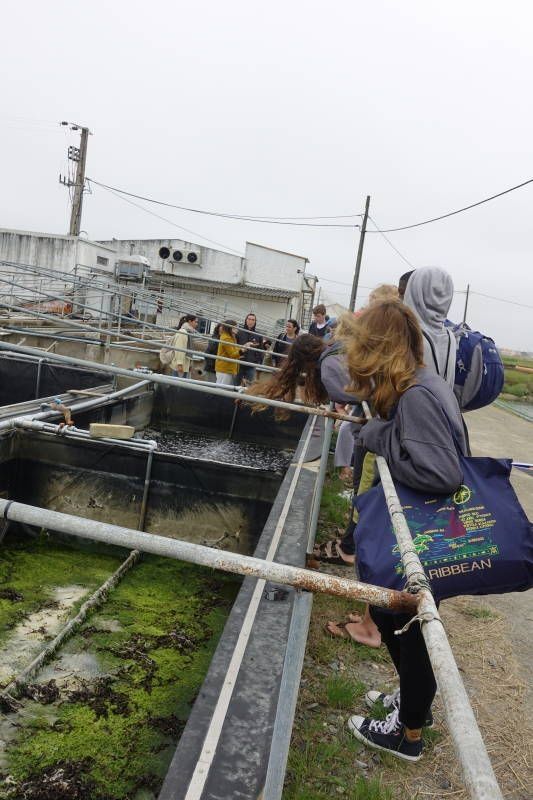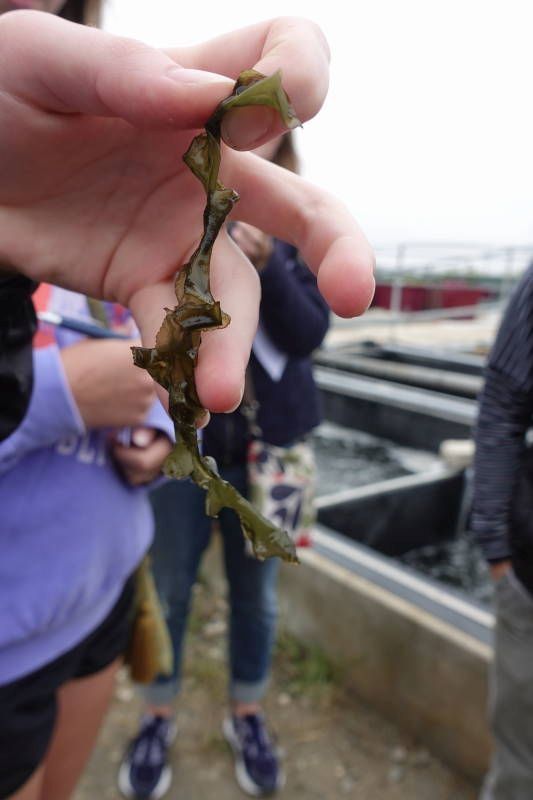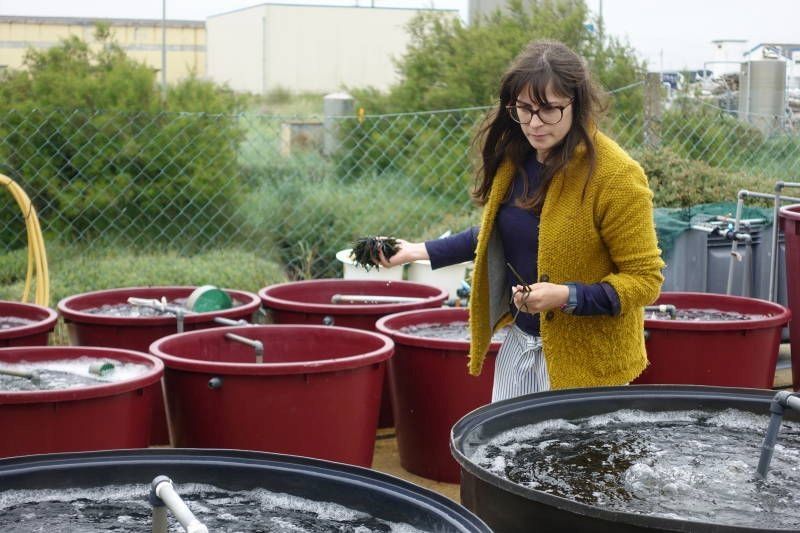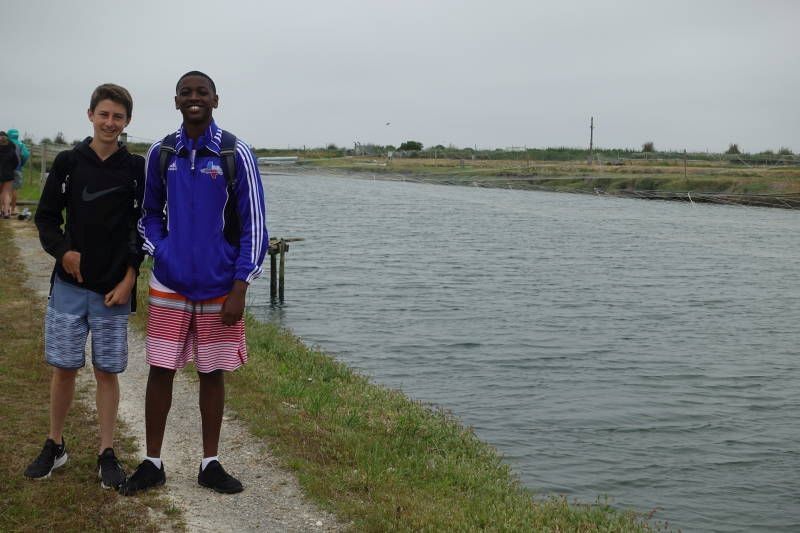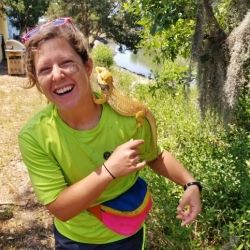What Taste Better; Fish, Salt, or Algae?
Where does your food come from? Don't know? That's okay, most people don't know exactly where their food comes from. Since we've been in Portugal, we have been able to get a behind the scenes look into some of the local farms. And these farms aren't the typical farms you think of when you think of a “farm”. We started off visiting the local fish market and then made our way to an algae farm, and finally on to a salt farm. Yes, I did say algae farm. It's not as gross as it sounds, most of it was seaweed. It actually tasted pretty darn good.
The Algae Farm
We drove way out into the middle of nowhere until we arrived at the algae farm, which from the outside, looked like it was nothing but a few ponds. What we didn't realize was that each of those ponds were filled with a different species of seaweed that the farmers were cultivating.
We all were able to sample the different species of seaweed and compare the flavors. I honestly can say that the students and leaders loved most of the different varieties. We saw first hand how much work went into the production of the algae/seaweed and how much science went behind raising it. They have dikes that renew the water twice a day and they have fish in the ponds to add natural nutrients for the plants.
Algae is the 'food of the future', it's low in calories, full of vitamins and minerals. There was also an older man who had been algae farming all his life and he said that eating plenty kept him looking youthful.
The Salt Flats
It was cold and dreary when we arrived at the salt farm, but it wasn't dampening (haha) our spirits. The salt is collected after the water evaporates in the summer. The farmers would create huge mounds of salt and then sell it as food and for theraputic bath salts. One hundred percent naturally and sustainably derived!
Fish Market
Before we headed out to the farms we went to the local fish market. It was like nothing I had ever seen before. I didn't even realize so many different species of fish were eaten, but here in Portugal, fish are a huge part of the diet and they seem to eat almost any kind! It was quite entertaining to watch the kids faces as they brought fish into the market straight off the boat. Some were still moving, which was a shock to a lot of us, even me.
Ending the Day With a Bang
After a filling lunch we headed back to the town of Aveiro. Our Portuguese leader Joana had booked us two traditional gondola-style boats to cruise the river in the town. We remarked how it felt like gondolas in Venice, although these boats were motor powered. On the water we learned a bit more about how the city was built around the water and the importance of the water to the local community. Patricia, our resident marine biologist, was on our boat and shared interesting facts about the area she had learned throughout her studies.
After our river sojurn, we had some free time to explore downtown. Students were familiar with the area after we had a tour in a “Survival Portuguese” on the first day and returned to shops to buy souvenirs. When we met as a group again, our Portuguese leaders had bought us traditional Aveiro sweets, Ovos Moles, made from egg yolks and sugar. Yum!!
Thank Maya!
I want to give a special shout out to Maya, one of my co-leaders, for fixing my grammer and helping add spice to my blog! Your'e the best.
Related Posts
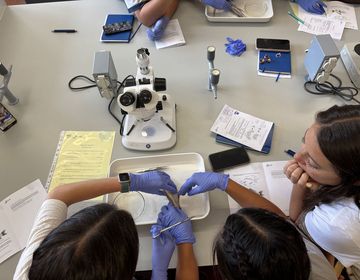
A Summer of Science, Service, and Self-Discovery in Lisbon
The following blog was written by Matt Redman , Vice President of High School Programs at CIEE, who has been with the organization since 2009. This summer, I had the... keep reading
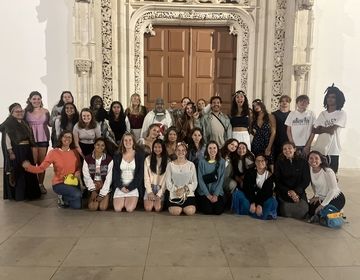
Our last days
It is hard to describe what these last few days have felt like for our student. In one sense it feels like we have been here forever— our group is... keep reading
